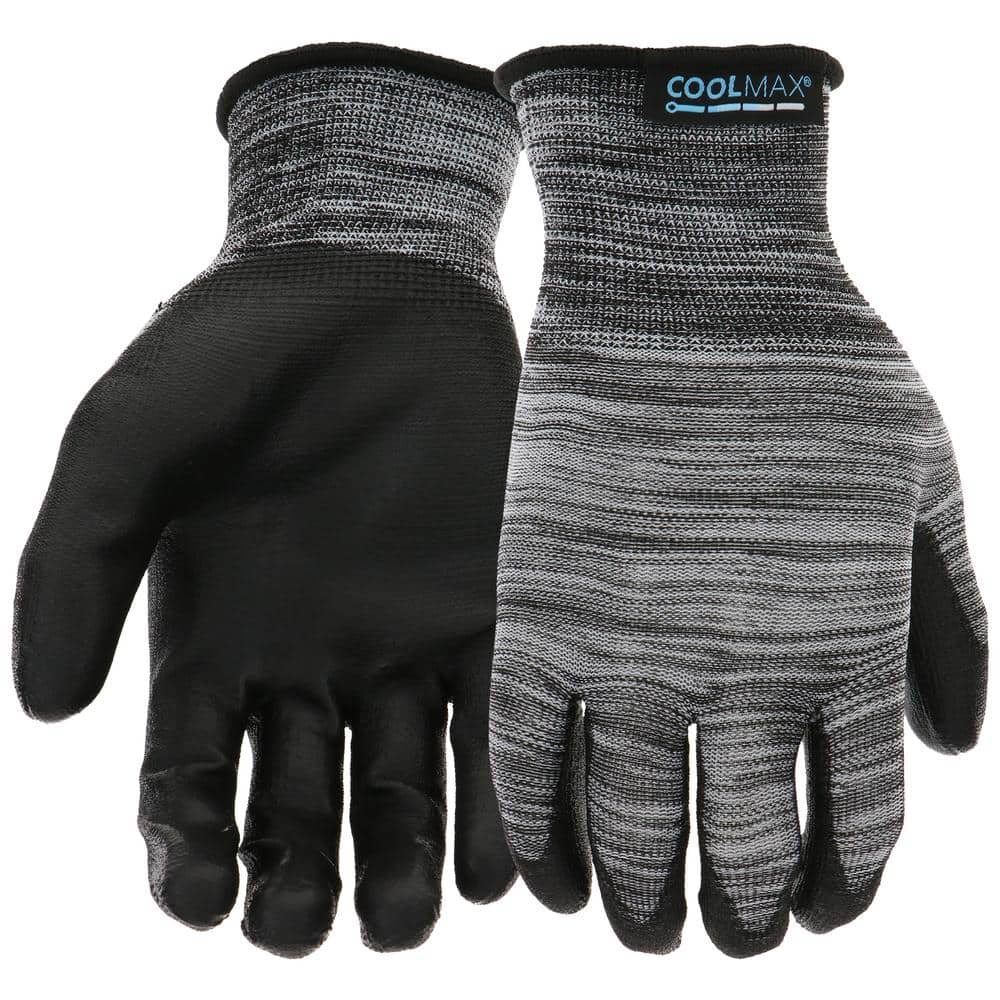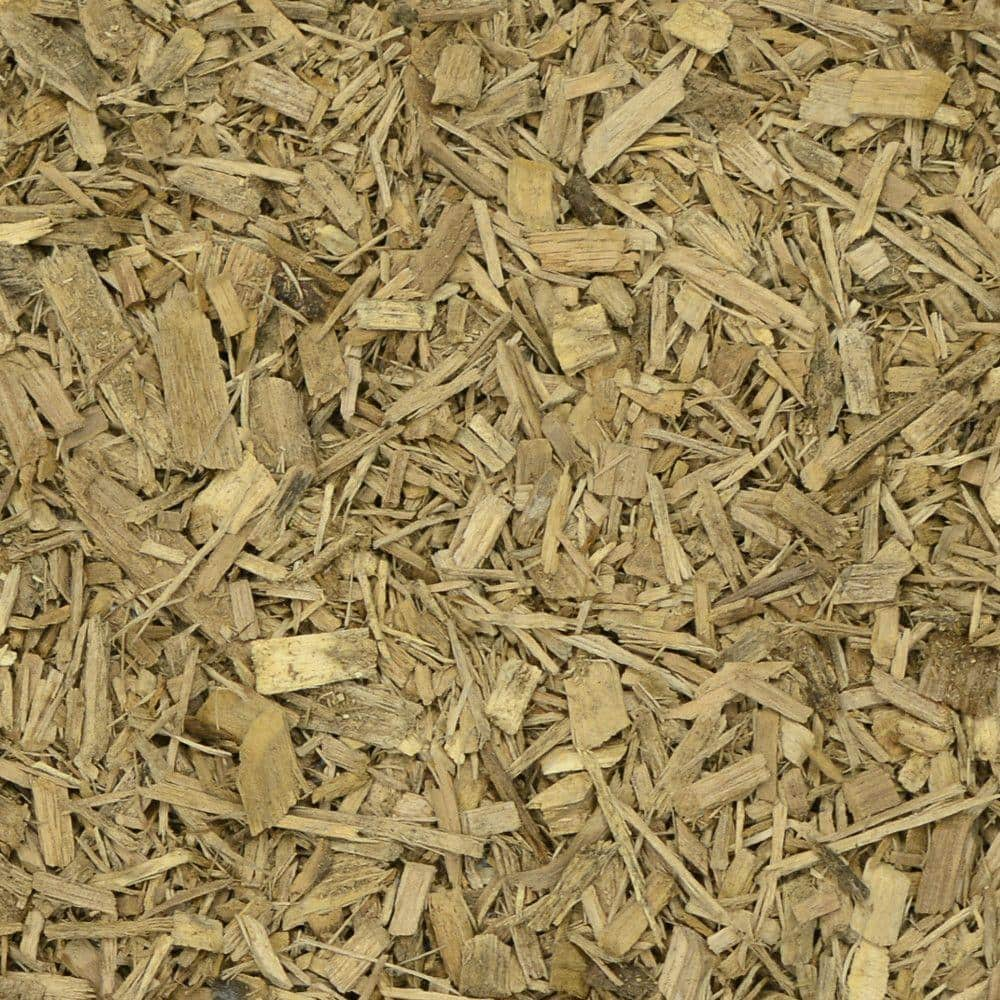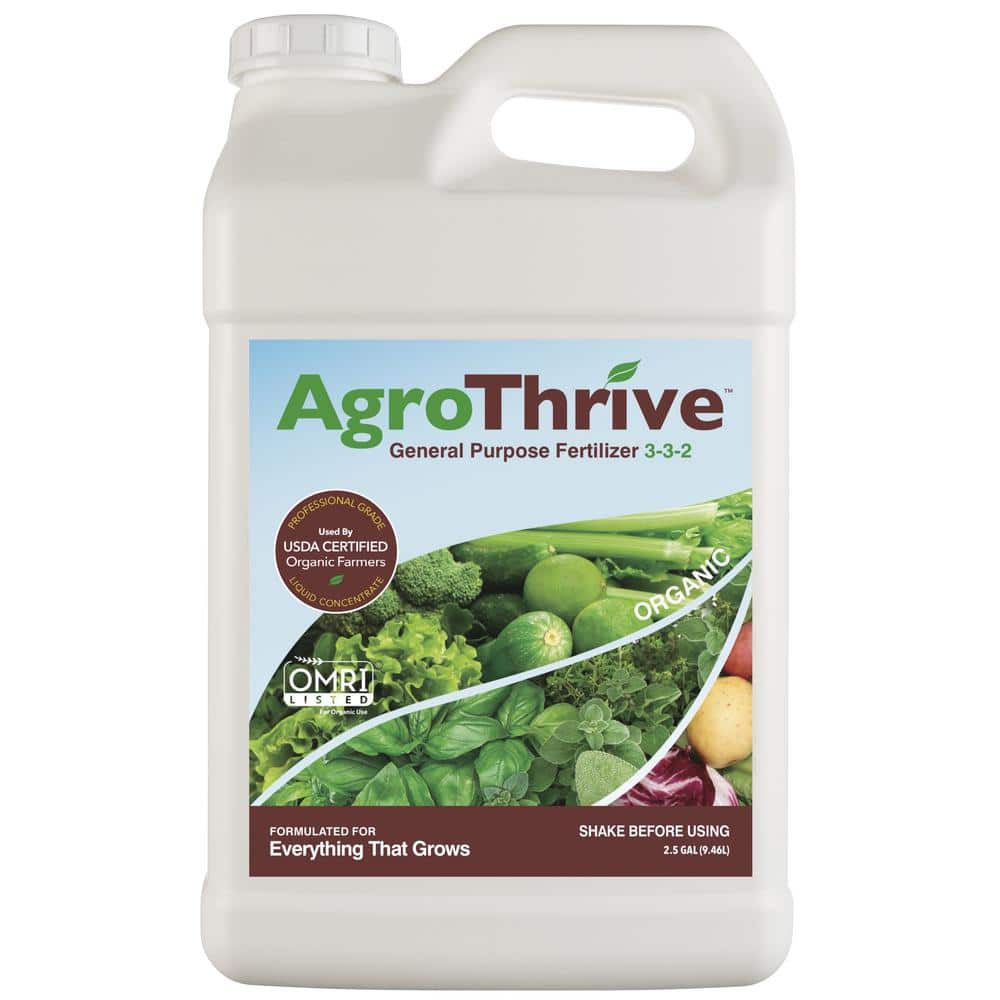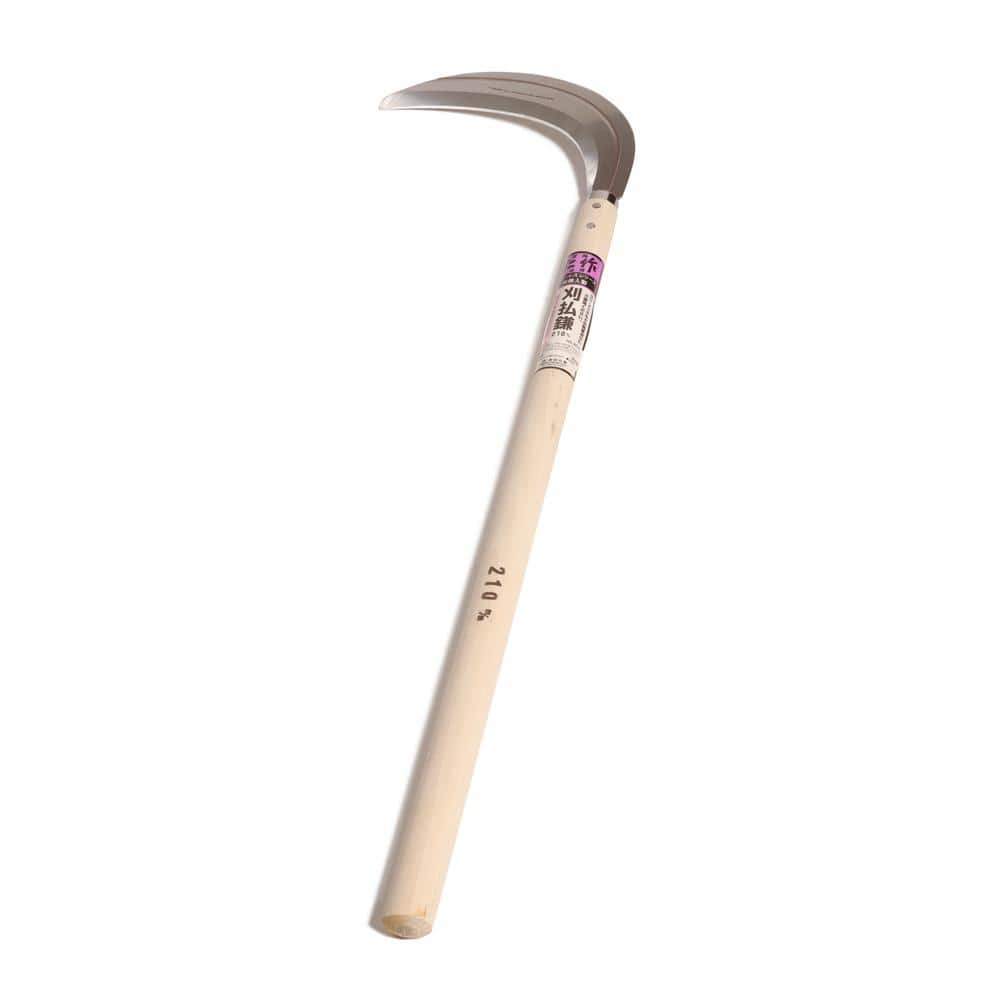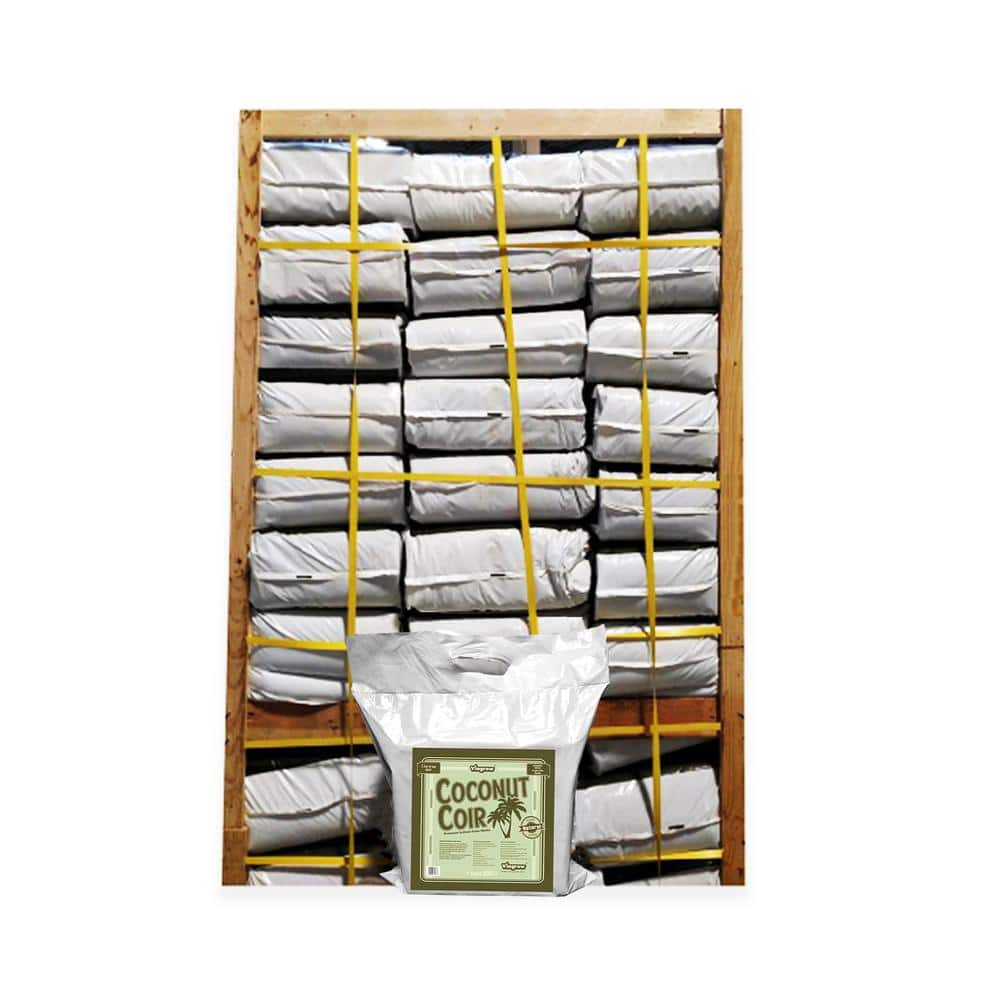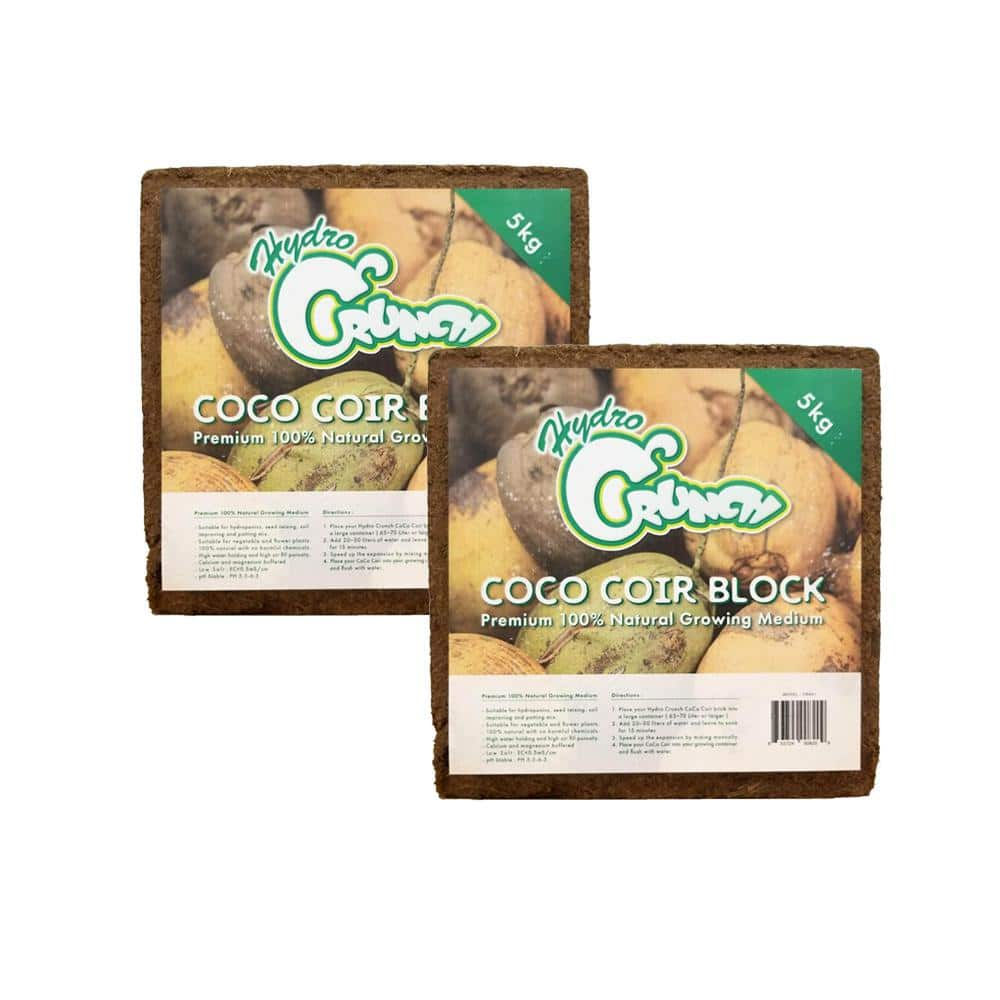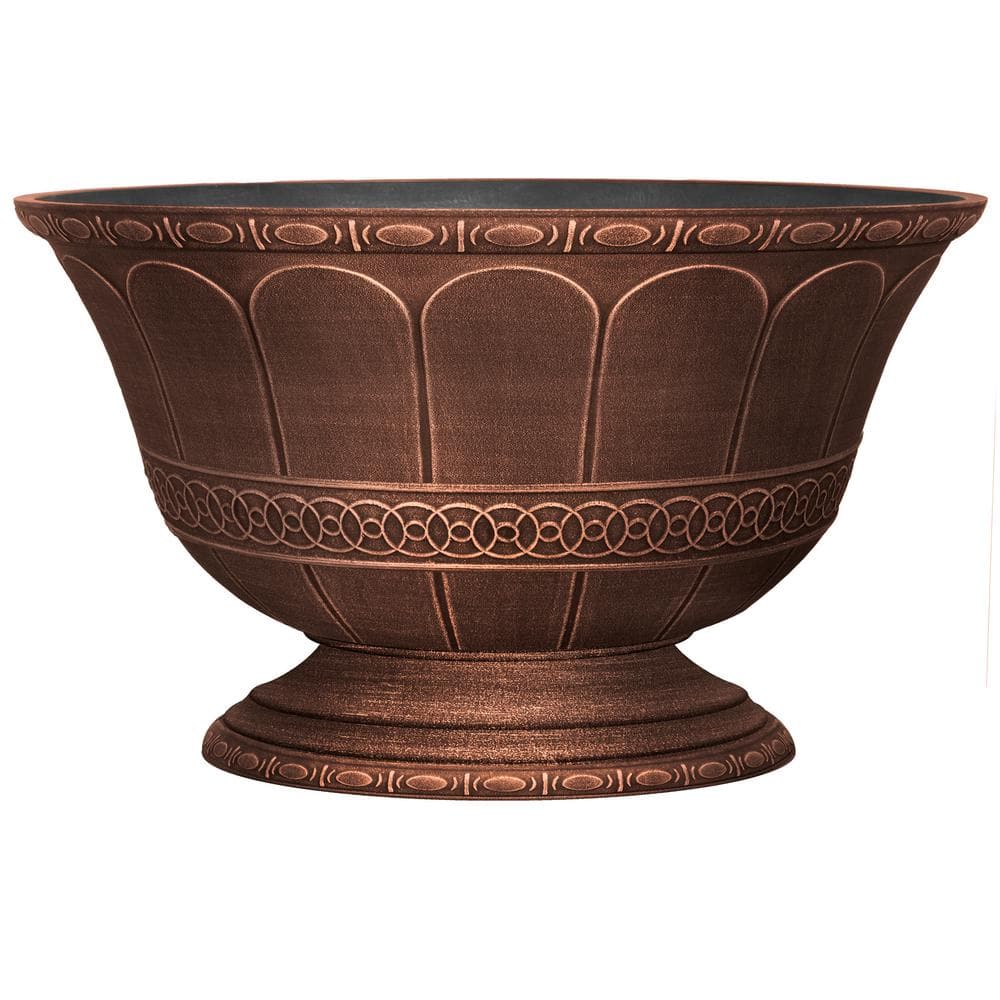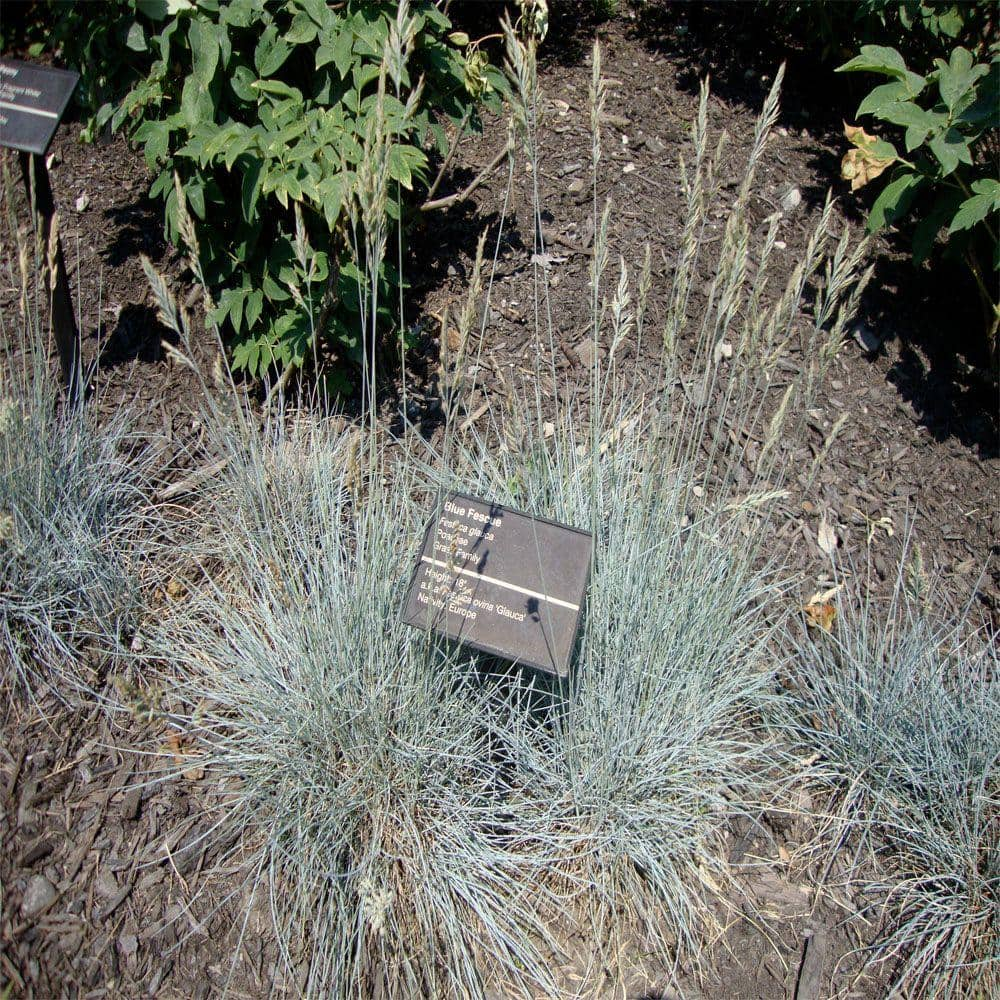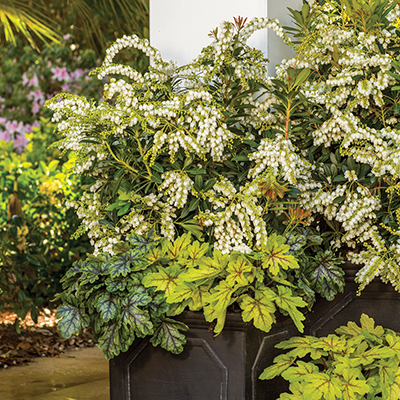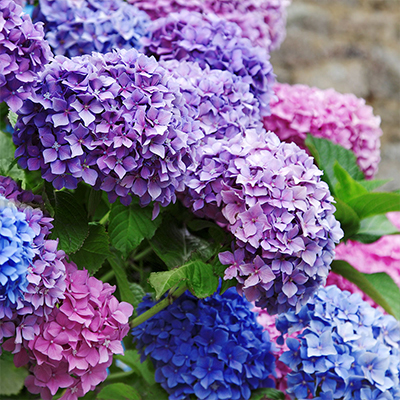Types of Ornamental Grass
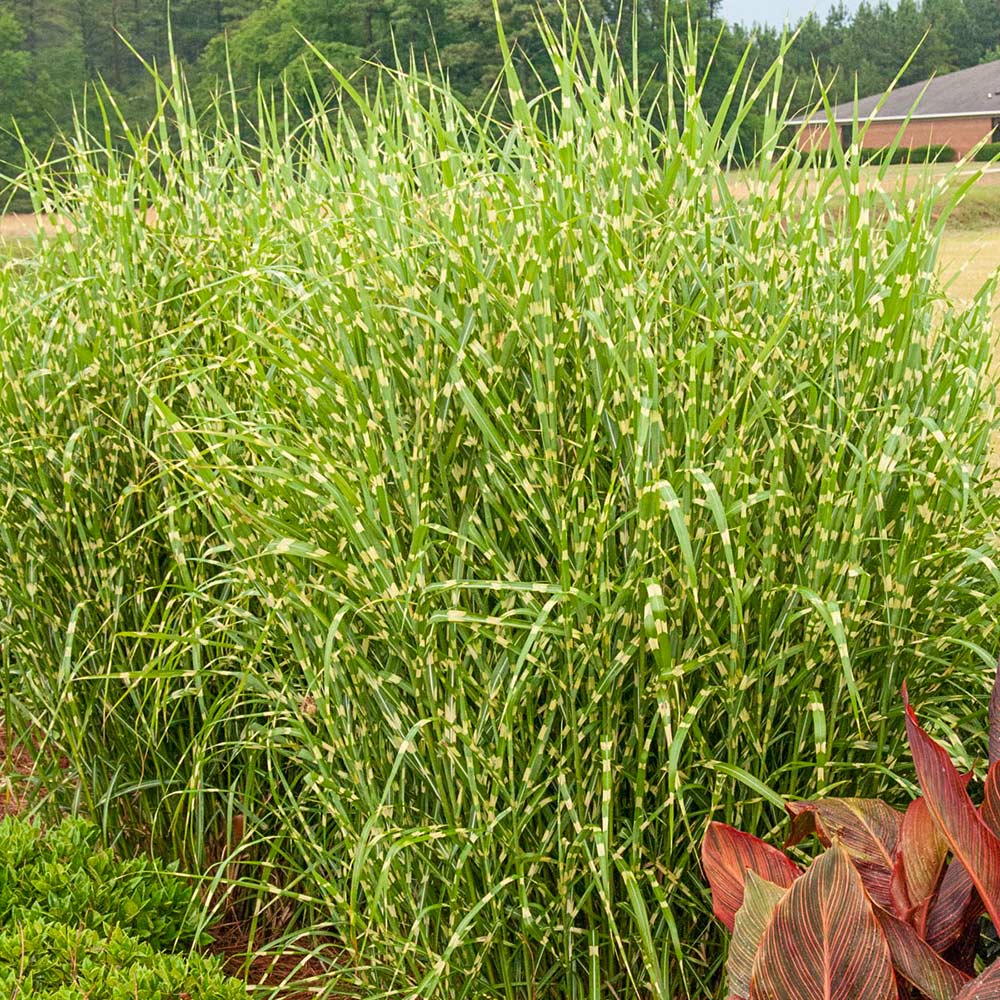
Last updated September 7, 2023
Ornamental grasses add texture, depth, motion and even sound to your garden and home landscape. These versatile plants can be used anywhere in your landscaping design to add a bold feature or contrast. Once established, ornamental grasses are drought-tolerant and require little maintenance to flourish. Keep reading this guide to discover 10 types of ornamental grasses and how to add them to your landscaping.
Table of Contents
How to Select Ornamental Grasses
Blue Fescue
Blue Oat Grass
Feather Reed Grass
Little Bunny Grass
Maiden Grass
How to Select Ornamental Grasses
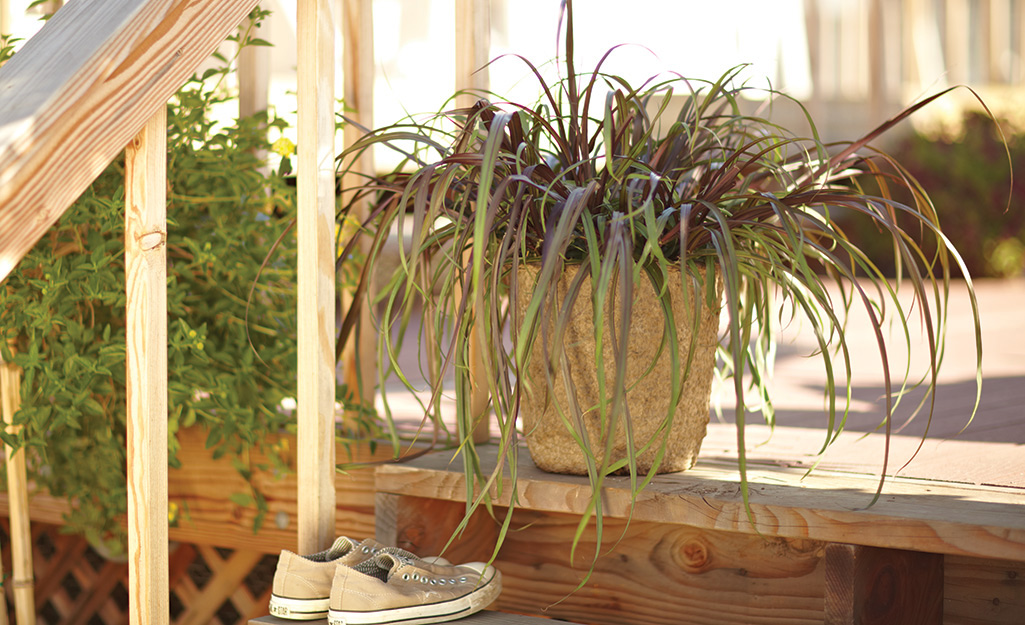
There are ornamental grasses native to every USDA hardiness zone, making it easy to find a variety that will work well in your yard. Before choosing an ornamental grass, research what hardiness zone you live in to verify the plant you choose will thrive in your yard. Most ornamental grasses like full sun and are drought-tolerant. They can typically grow in most soil conditions as long as the soil is not overly wet.
Ornamental grasses are landscaping problem-solvers. Certain varieties have characteristics like deer and pest resistance, making them low-maintenance additions to your yard. Their interesting shapes, unique features and surprising colors add to your curb appeal.
Here are the four things to consider:
- Location. Ornamental grasses like full sun and are tolerant of most soil conditions as long as it’s not too wet.
- Solution. Ornamental grasses are landscape problem-solvers. Certain varieties have characteristics like deer- and pest-resistance. Some are salt-tolerant, others make effective windbreaks and erosion control. To learn more, read plant tags and check the Garden Center online.
- Selection. Will this be a single, spectacular grass, or a mass planting? Consider the height of the grass and its impact on the landscape. For example, pampas grass is a lifetime commitment. Once established, it is difficult to relocate, but in the right place, it is a low-maintenance, high-impact feature. A mass planting of pink Muhly grass, with its clouds of rose-colored blooms, will be a sight you will anticipate all summer long. Dwarf varieties like Little Bunny dwarf fountain grass give year-round interest in a perennial bed.
- Containment. Ornamental grasses grow in either a clumping or creeping habit. Creepers grow from rhizomes, which shoot out runners. This is desirable if you have a large area to cover, but if you do not, pay careful attention to the plant tag. Grasses also make excellent container plants, adding the thriller element to fall containers.
Blue Fescue
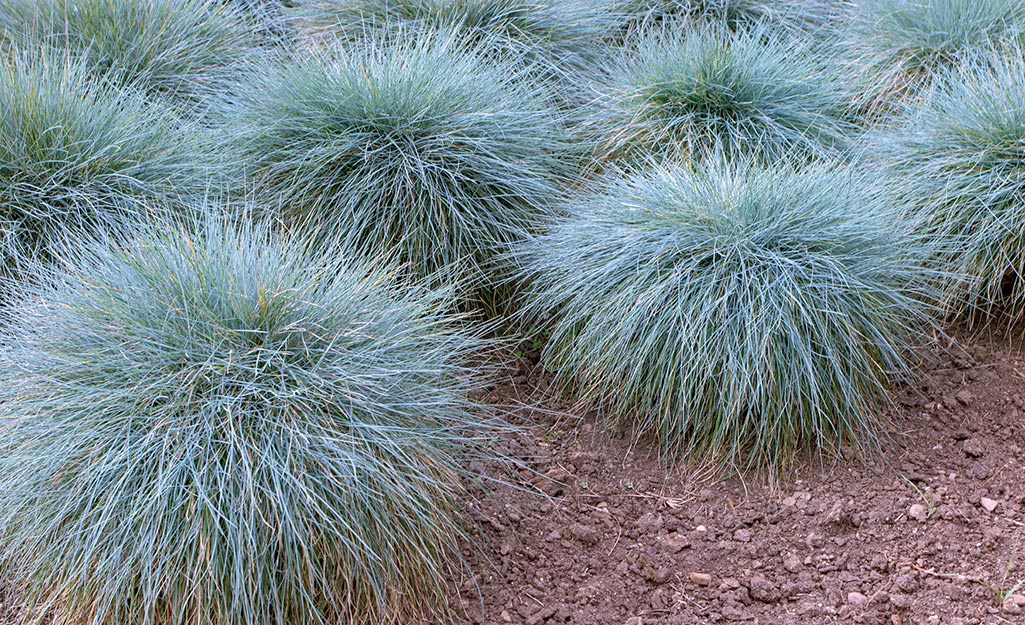
Blue Fescue is a colorful ornamental grass. It features silvery blue foliage and pale green flowers. The flowers turn a light brownish-yellow as they mature. Blue Fescue is drought tolerant and grows in USDA plant hardiness zones 4 to 8. These zones cover much of the midwest and south. Blue Fescue is a low-water champ that’s ideal for landscape edging. It has a shorter lifespan that can be extended by cutting and dividing every few years.
Blue Oat Grass
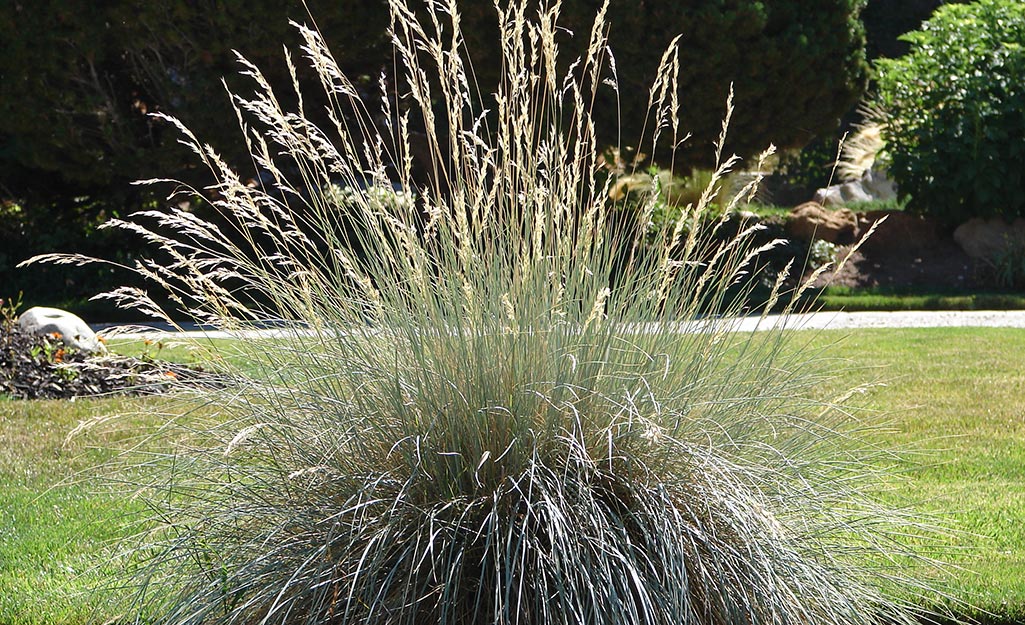
Dry soil increases the signature pale blue color of Blue Oat Grass. This easy-to-grow Mediterranean grass is another low-water option across the US in zones 3 and 4 to 8, spanning the central to south midwest. Blue Oat Grass thrives in the mountainous areas of Colorado and Utah. Blue Oat Grass forms lush clumps of steely blue foliage that look great on slants, hills and edges. It enjoys full sun conditions and creates a round, soft-edged look in your landscaping.
Tip: Blue Oat Grass can grow in areas with part sun and part shade but may become leggy in these conditions.
Feather Reed Grass
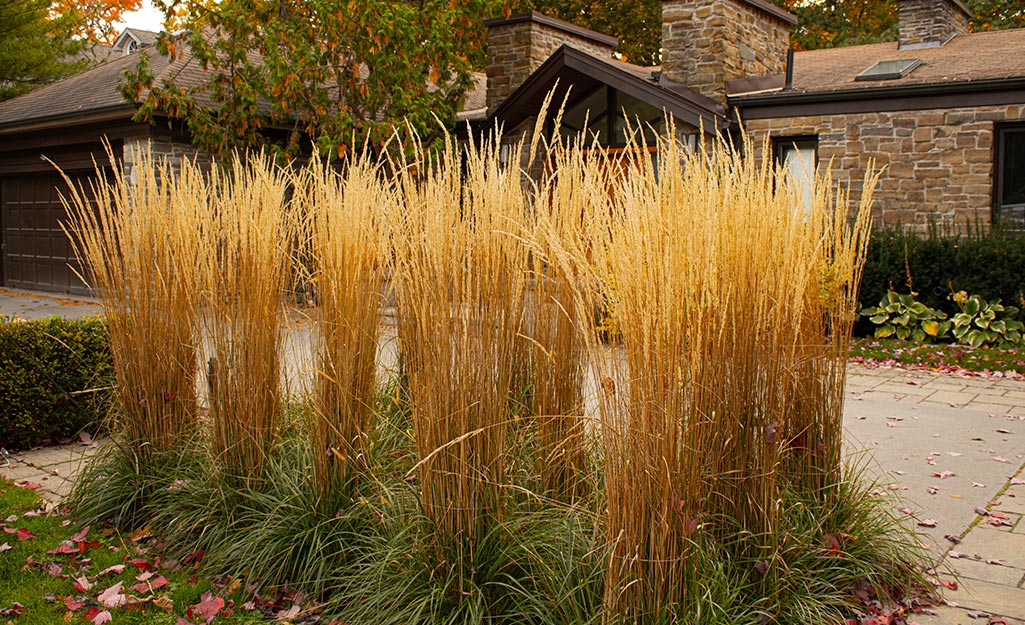
One of the most popular ornamental grasses for homeowners, Feather Reed Grass, is tall and slim. It makes innovative use of vertical landscaping space. This adds dimension to your yard and acts as a natural privacy solution. Feather Reed Grass grows well in zones 3 to 9, covering the midwest and central US. Its deep green, glossy foliage appears early in the spring. It’s adaptable to wet and dry areas, becoming a gorgeous golden wheat color that mixes well with many other landscaping foliage varieties.
Little Bunny Grass
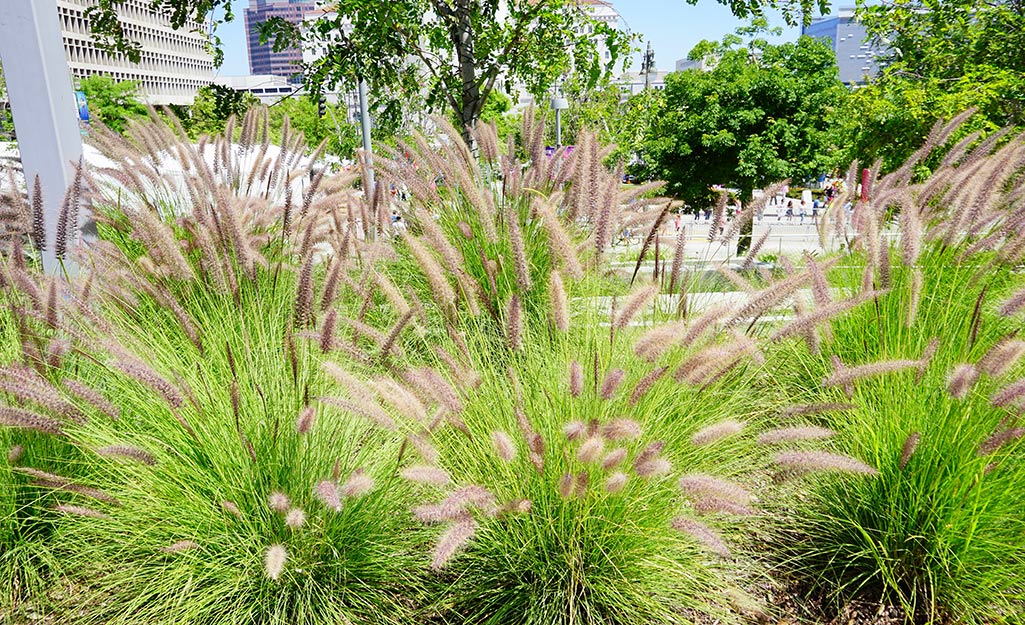
Little Bunny Grass is a miniature version of fountain grass. Its cream-colored, tufted seed heads appear above a clump of dark green foliage. Little Bunny Grass blooms in late summer and grows well in zones 5 through 9, covering much of the US. It requires rich, well-drained soil and doesn’t tolerate wet soil well. The foliage can be left standing through winter. In the following spring, any new growth should be cut back.
Tip: The ideal amount of sun or shade is full sun, part sun or part shade, ranging from 6 to 4 hours of full sunlight at least.
Maiden Grass
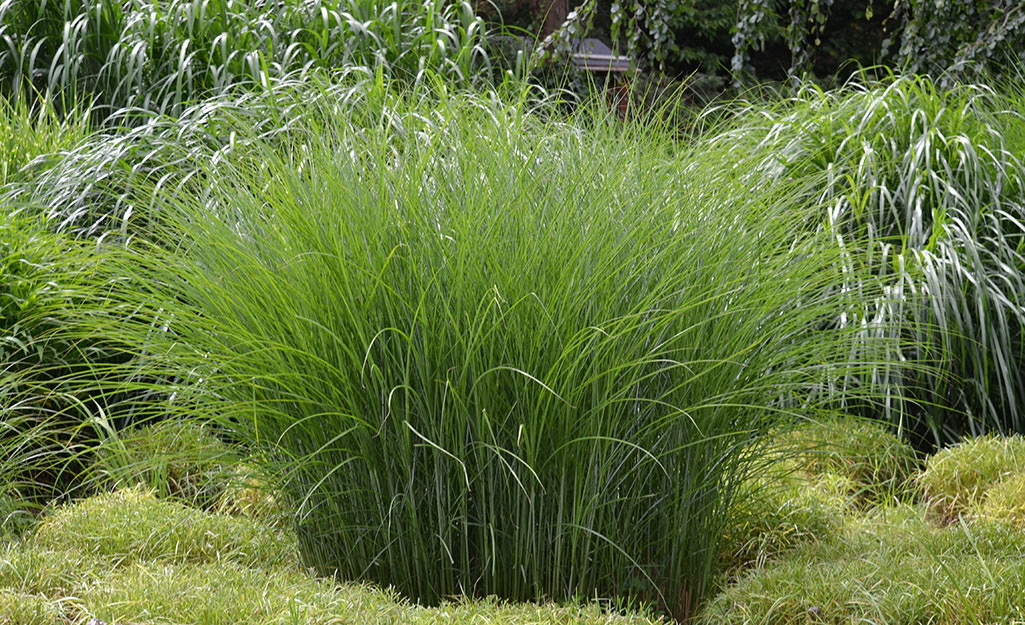
Whimsical and flowing, Maiden Grass is a big, billowing ornamental grass variety. It can grow up to 9 feet tall and 6 feet wide, making it wonderful for wide open spaces in your landscaping. Maiden Grass prefers moist soil and grows incredibly easily. It grows particularly well in zones 5 through 9, spanning the lower half of the US from coast to coast. Maiden Grass is drought resistant and deer-resistant and can tolerate almost any type of soil, including clay soil.
Tip: Dried Maiden Grass makes a lovely addition to floral displays indoors.
Mexican Feather Grass
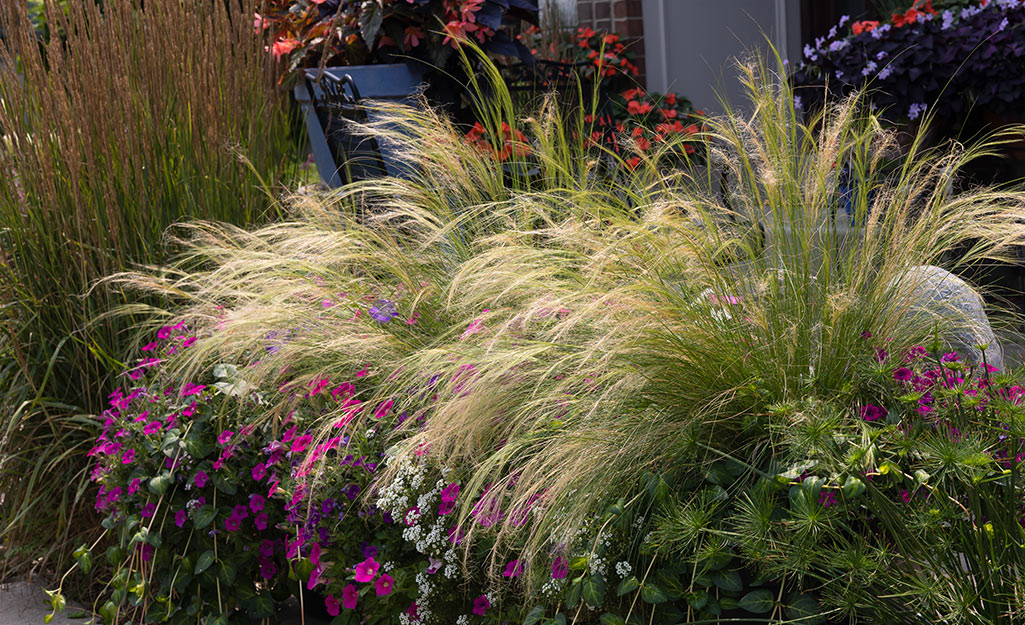
Native to the mountains of West Texas and Southern New Mexico, Mexican Feather Grass is a stunning ornamental grass species. Its fine texture and wispy, flowing lime-green foliage create magical movements that elevate your landscaping. The dense, fountain-shaped clumps have a fuzzy appearance, softening an angular landscape design. Mexican Feather Grass is a rapid reseeder that requires very little maintenance to thrive. It can grow well in zones 7 through 10, covering the southern US. It prefers quick-draining, lean soil and is very drought-tolerant.
Pampas Grass
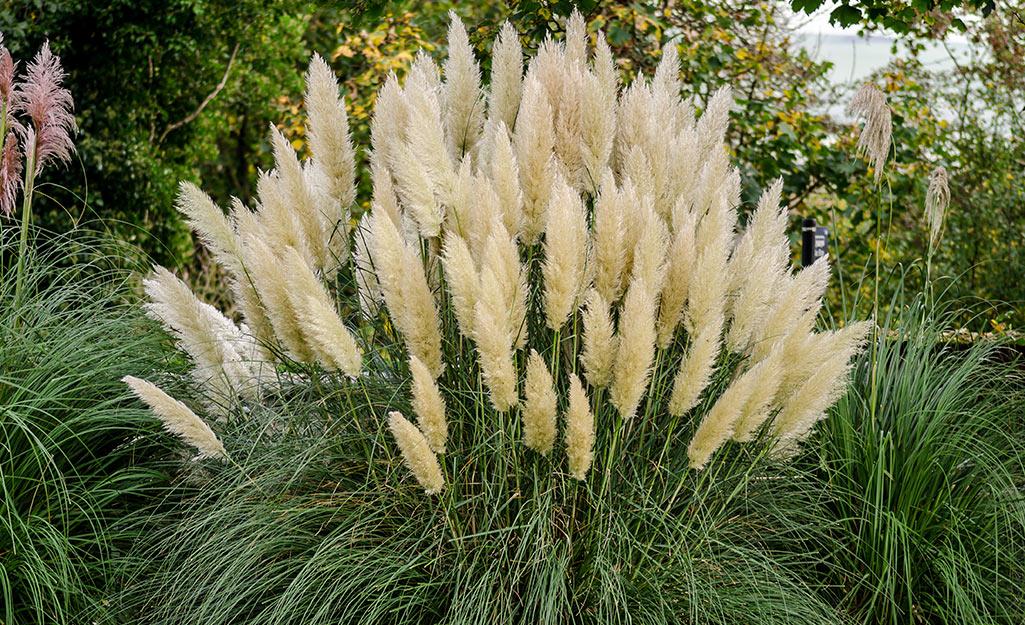
Pampas Grass is a very tall, whimsical grass that can grow anywhere from 8 to 12 feet tall. It features robust, vertical plumes that look like big, fluffy white feathers. Long-lasting, low-maintenance and full of texture, Pampas Grass is an extremely popular landscaping choice. It does well in sunny areas with well-draining soil and rarely needs watering or fertilization. Pampas Grass thrives in zones 7 through 11 in the southern part of the US.
Tip: Dried and preserved pampas grass is also popular indoor decor. It's long-lasting and looks gorgeous in a tall vase.
Pink Muhly Grass
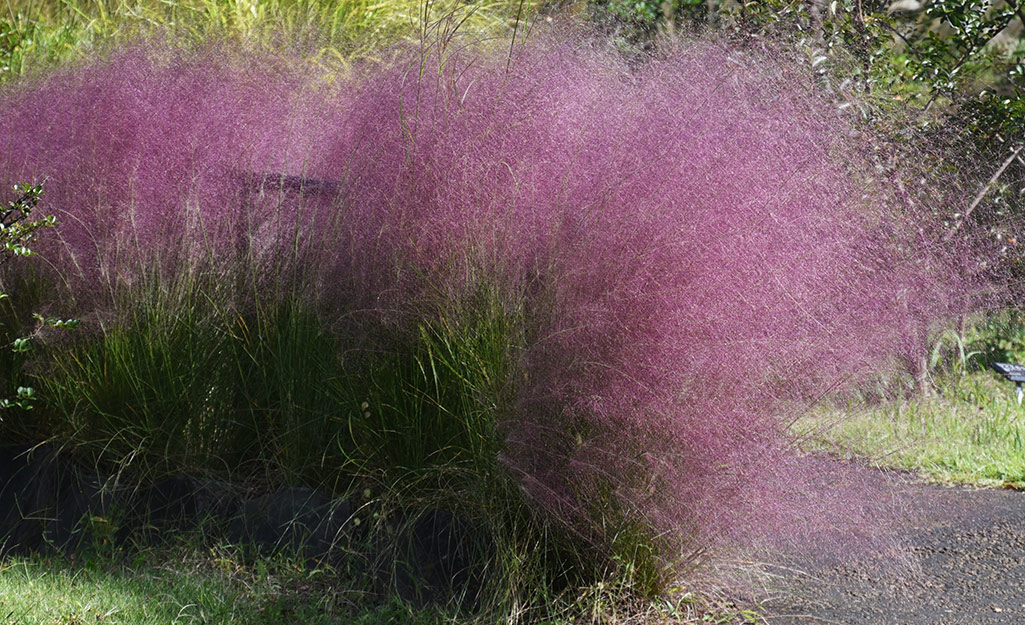
Pink Muhly Grass is a popular ornamental grass for landscaping, thanks to its eye-catching pink glow in autumn. It’s drought-tolerant but doesn’t mind some extra water from time to time. Gorgeous and low-maintenance, Pink Muhly Grass enjoys full to part sun and dry, well-drained soil. Native to North America, Pink Muhly Grass rarely suffers from pests or diseases and is highly resistant to deer. It grows in zones 6 through 10, covering the west coast, southern states and the majority of the east coast, excluding New England.
Purple Fountain Grass

Purple Fountain Grass features a great, deep purple hue and complex texture, combining fountaining strands and feathery seed shoots. It grows as a perennial in warmer climates and an annual in cooler areas. Purple Fountain Grass can thrive in containers
and is drought-tolerant and deer resistant. It has a fast growth rate, and the burgundy hue stays vibrant from spring through fall. Purple Fountain Grass grows best in zones 9 and 10 and makes a lovely addition to a curb, patio edge or planter with organic soil.
Zebra Grass
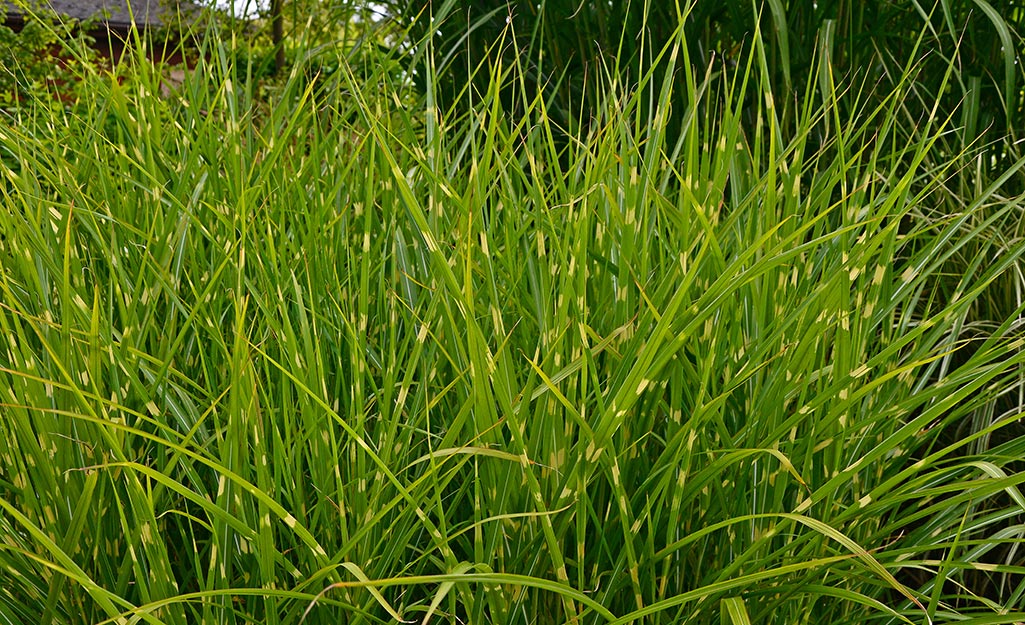
Zebra Grass stands tall with a vibrant green tone in the summer, featuring white blooms and lovely seed head plumes in the late season. This makes it a popular addition to landscaping because of its multiple stages of visual interest. The variegated leaves alternate creamy golden stripes that cut horizontally across the green blades of grass, mimicking the stripes of a zebra’s coat. Zebra Grass enjoys full sun exposure and can thrive in chalk, clay, loam and sand soil. It survives well in zones 5 through 9 but can be planted as a perennial throughout the US.
Tips for Gardening with Ornamental Grass
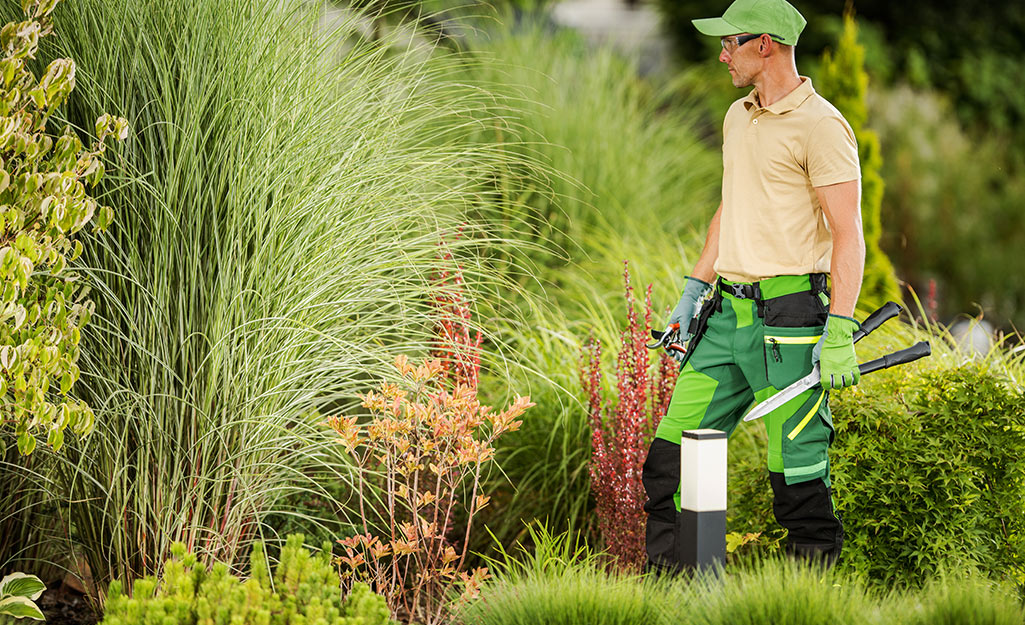
Once you’ve picked the ornamental grasses you’d like to add, their health and longevity come down to good tending practices. Below are some tips for gardening with ornamental grasses:
- Before planting, work a balanced fertilizer into the soil. Fertile every spring with a slow-release fertilizer.
- Water thoroughly twice a week until the grass is established, then reduce watering to once a week
- Keep weeds down and retain moisture in the soil by adding 2 to 3 inches of mulch
around the base of the grass - Make easy work of trimming by bundling your plant with twine. Tie the twine tightly about halfway up the plant.
- Cut back your grass using hedge shears or pruning shears. Cut back to about 4 to 6 inches from the base of the plant. Wear gardening gloves to protect your hands.
- Every few years, clumping grasses need to be divided. After cutting back the clump, dig it up and use a garden knife to cut it in half.
Ornamental grasses add drama, depth and texture to your yard. From containers on the porch or deck to your walkway or front entrance, the plumes, seed pods and unique colors make your yard an outdoor oasis you’ll enjoy for years to come. Use the Home Depot Mobile App to locate products and check inventory. We’ll take you to the exact aisle and bay.
